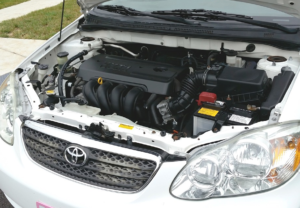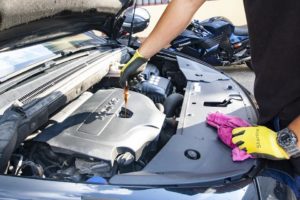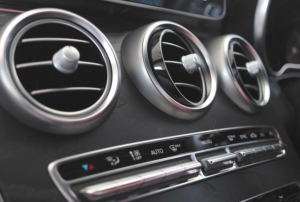Post Winter Inspections for your Vehicle
 As winter makes its retreat and spring starts to bloom, it’s the perfect time to give your vehicle some much-needed attention after enduring harsh weather conditions. Post-winter vehicle care is crucial for ensuring your car’s longevity and optimal performance throughout the warmer months ahead. Here’s a concise guide to help you navigate the essential tasks.
As winter makes its retreat and spring starts to bloom, it’s the perfect time to give your vehicle some much-needed attention after enduring harsh weather conditions. Post-winter vehicle care is crucial for ensuring your car’s longevity and optimal performance throughout the warmer months ahead. Here’s a concise guide to help you navigate the essential tasks.
Cleaning your Vehicle
Firstly, start with a thorough inspection of your vehicle’s exterior. Winter can take a toll on the paint, undercarriage, and windshield. Salt, sand, and other road debris used for de-icing can cause corrosion and damage if left unchecked. Give your car a good wash, paying special attention to the undercarriage and wheel wells where salt tends to accumulate. Consider applying a coat of wax to protect the paint from UV rays and further environmental damage. Don’t forget to clean the windshield and wiper blades, ensuring clear visibility for safe driving. Additionally, inspect for any signs of rust or damage, addressing them promptly to prevent further deterioration.
Check all the Fluid Levels
Next, move on to the mechanical components of your vehicle. Start by checking the fluid levels, including engine oil, coolant, brake fluid, and windshield washer fluid. Winter driving can deplete these fluids faster than usual, so it’s essential to top them off as needed. Inspect the brakes, tires, and suspension for any signs of wear and tear. Cold temperatures can affect tire pressure, so make sure to inflate them to the recommended levels. Consider rotating your tires if necessary to ensure even wear. Additionally, have your battery tested to ensure it’s still in good condition. Winter cold can strain batteries, leading to decreased performance or failure.
Don’t forget about the interior of your vehicle. Remove any clutter that may have accumulated over the winter months, vacuuming carpets and upholstery to remove dirt and debris. Clean and condition leather seats to prevent drying and cracking. Check the functionality of all interior components, such as the heating and air conditioning system, lights, and electronics. Address any issues promptly to ensure a comfortable and safe driving experience. By following these post-winter vehicle care tips, you can help prolong the life of your car and ensure it’s ready to take on the challenges of the road ahead, no matter the season.
Driving on Ice or Snow Covered Roads Safely
 Navigating icy or snow-covered roads demands a unique set of skills and precautions from drivers. As winter descends and road conditions become hazardous, it’s crucial to adopt safe driving practices to ensure a secure journey. Here are some essential tips for driving on ice or snow covered roads.
Navigating icy or snow-covered roads demands a unique set of skills and precautions from drivers. As winter descends and road conditions become hazardous, it’s crucial to adopt safe driving practices to ensure a secure journey. Here are some essential tips for driving on ice or snow covered roads.
Reducing your Speed
Firstly, reducing speed is paramount. Slowing down allows for better control and reaction time, mitigating the risk of skidding or losing traction on slippery surfaces. It’s advisable to drive well below the posted speed limit, particularly when encountering icy patches or snow-covered roads. Additionally, maintaining a safe following distance between vehicles is essential, providing ample space for braking and maneuvering. Gentle and gradual movements when accelerating, braking, and steering help maintain traction and stability, minimizing the likelihood of accidents.
Adjust your Driving habits when there is ice and snow
Secondly, adapt your driving technique to suit the conditions. When approaching turns or bends, it’s crucial to brake gently before entering and maintain a steady speed throughout the maneuver. Sudden changes in direction or speed can lead to loss of traction and control, particularly on icy surfaces. In the event of a skid, remaining calm and steering in the direction you want to go without overcompensating is crucial. Utilizing lower gears when ascending or descending hills can provide better traction and control, reducing the risk of wheel spin. Additionally, staying vigilant for black ice, which is often transparent and difficult to detect, is essential, especially on shaded areas, bridges, and overpasses where it commonly forms.
Lastly, preparation and awareness are key components of safe winter driving. Before embarking on a journey, checking weather forecasts and road conditions is essential, allowing drivers to make informed decisions about their route and travel plans. Informing someone of your intended route and estimated arrival time is advisable, particularly when traveling through remote or isolated areas. Carrying an emergency kit stocked with essentials such as blankets, non-perishable food, water, a flashlight, and a first aid kit is essential for handling unexpected situations. By adhering to these tips and exercising caution, drivers can navigate icy or snow-covered roads and staying safe.
Checking the Fluids of your Car
 Regularly checking the fluids in your vehicle is a crucial aspect of proper maintenance to ensure its smooth operation and longevity. There are several essential fluids that every car owner should routinely inspect to keep their vehicle running at its best. First and foremost is engine oil, which serves as the lifeblood of the engine. Engine oil lubricates the engine’s moving parts, reduces friction, and helps dissipate heat. It’s vital to check the oil level regularly using the dipstick and ensure it’s within the recommended range. Additionally, monitor the oil’s color and consistency; if it appears dark or gritty, it may be time for an oil change. Neglecting to maintain proper oil levels and quality can lead to increased engine wear and potentially costly damage.
Regularly checking the fluids in your vehicle is a crucial aspect of proper maintenance to ensure its smooth operation and longevity. There are several essential fluids that every car owner should routinely inspect to keep their vehicle running at its best. First and foremost is engine oil, which serves as the lifeblood of the engine. Engine oil lubricates the engine’s moving parts, reduces friction, and helps dissipate heat. It’s vital to check the oil level regularly using the dipstick and ensure it’s within the recommended range. Additionally, monitor the oil’s color and consistency; if it appears dark or gritty, it may be time for an oil change. Neglecting to maintain proper oil levels and quality can lead to increased engine wear and potentially costly damage.
Other Fluids to Check
Another critical fluid to monitor is coolant, also known as antifreeze. Coolant plays a vital role in regulating the engine’s temperature and preventing it from overheating or freezing. It circulates through the engine and radiator, absorbing heat and dissipating it into the air. It’s essential to check the coolant level regularly and ensure it’s at the appropriate level, as indicated by the markings on the coolant reservoir. Additionally, inspect the coolant for any signs of contamination or degradation, such as rust or discoloration, which could indicate a coolant leak or the need for a coolant flush and replacement. Maintaining proper coolant levels and quality is crucial for preventing engine overheating and costly repairs.
Remember the Transmission Fluid
Transmission fluid is another vital fluid that requires regular attention. Transmission fluid lubricates the transmission’s moving parts, facilitates smooth gear shifts, and helps cool the transmission system. It’s essential to check the transmission fluid level regularly using the dipstick and ensure it’s within the recommended range. Additionally, inspect the fluid’s color and odor; if it appears dark or smells burnt, it may indicate the need for a transmission fluid change. Neglecting transmission fluid maintenance can lead to transmission problems, such as rough shifting or transmission failure, which can be costly to repair. By staying proactive and routinely checking and maintaining these essential fluids, car owners can help ensure their vehicle’s optimal performance and longevity on the road. Remember to consult your vehicle’s owner’s manual for specific maintenance schedules and recommendations tailored to your make and model, and don’t hesitate to seek professional assistance if you’re unsure about any aspect of fluid maintenance.
Slick Roads and Staying Safe this Winter
 Navigating slick roads win the winter demands a blend of caution, preparation, and adaptive driving techniques to ensure a safe journey. First and foremost, prioritize winterizing your vehicle. Equip it with winter or snow tires, designed to provide better traction on icy surfaces. Regularly check tire pressure and tread depth to maintain optimal grip. Additionally, ensure that all essential fluids, including windshield washer fluid and antifreeze, are at appropriate levels. Visibility is key in winter driving, so replace worn-out windshield wipers and keep your headlights on to enhance visibility for both you and other drivers.
Navigating slick roads win the winter demands a blend of caution, preparation, and adaptive driving techniques to ensure a safe journey. First and foremost, prioritize winterizing your vehicle. Equip it with winter or snow tires, designed to provide better traction on icy surfaces. Regularly check tire pressure and tread depth to maintain optimal grip. Additionally, ensure that all essential fluids, including windshield washer fluid and antifreeze, are at appropriate levels. Visibility is key in winter driving, so replace worn-out windshield wipers and keep your headlights on to enhance visibility for both you and other drivers.
Slick Roads in the Winter
When faced with slick winter roads, adjusting your driving behavior is crucial. Slow down and increase your following distance to allow for extended reaction time. Braking distances are longer on icy surfaces, so maintain a safe gap from the vehicle in front of you to avoid rear-end collisions. Embrace smooth and gradual movements when accelerating, braking, and steering. Sudden actions can lead to skidding, so focus on maintaining control through gentle inputs. If your vehicle begins to skid, steer in the direction you want to go and apply gentle pressure to the brakes to regain stability. Keeping a calm demeanor and avoiding panic is essential in winter driving situations.
Make sure you are prepared for any type of weather
Staying informed about weather conditions is paramount during the winter months. Check weather forecasts and road reports before embarking on your journey, and be prepared to alter your plans if conditions deteriorate. Exercise extra caution on bridges, overpasses, and shaded areas, as these locations are prone to icy patches. Communication is key, so inform someone about your travel plans and ensure your mobile phone is fully charged in case of emergencies. By combining vehicle preparedness, cautious driving habits, and proactive planning, drivers can confidently navigate slick winter roads, reducing the risk of accidents and ensuring a safer winter driving experience.
Why your Car Heater is not Blowing out Warm Air
 Experiencing a malfunctioning car heater can be especially inconvenient during chilly weather. One of the common reasons for a car heater not working is a low coolant level. The heater in your car operates by using hot coolant from the engine. If the coolant level is too low, there might not be enough hot coolant to circulate through the heater core, resulting in a lack of warm air blowing into the cabin. Regularly checking and maintaining the proper coolant levels can help ensure your car’s heater functions efficiently.
Experiencing a malfunctioning car heater can be especially inconvenient during chilly weather. One of the common reasons for a car heater not working is a low coolant level. The heater in your car operates by using hot coolant from the engine. If the coolant level is too low, there might not be enough hot coolant to circulate through the heater core, resulting in a lack of warm air blowing into the cabin. Regularly checking and maintaining the proper coolant levels can help ensure your car’s heater functions efficiently.
A faulty thermostat is another potential culprit for a non-functioning car heater. The thermostat regulates the flow of coolant through the engine and heater core, determining when the heater should engage. If the thermostat is stuck open, it allows the coolant to circulate continuously, preventing it from reaching the optimal temperature for heating the air. Replacing a malfunctioning thermostat is a relatively straightforward fix that can restore the proper functioning of your car’s heater.
Clogged or blocked heater cores can also lead to heating issues. The heater core is a small radiator-like component that transfers heat from the engine coolant to the air inside the vehicle. Over time, the heater core can accumulate debris or become clogged, hindering its ability to produce warm air. Flushing the heater core or seeking professional assistance for a thorough cleaning can address this issue. Regular maintenance, including checking coolant levels, replacing thermostats, and ensuring the heater core is clean, is crucial for preventing heating problems in your car and maintaining a comfortable driving experience, especially during colder seasons.

![apc_logo_sm[1]](/wp-content/uploads/2020/05/apc_logo_sm1.png)








